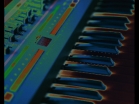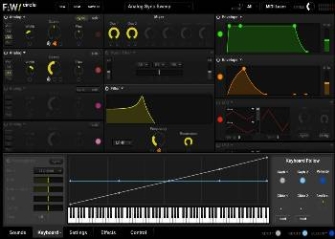
So What Exactly 'Are' Software Synths And VST's ?
In the mid to late 1990's the major hi-tech musical instrument manufacturers began to experiment with hardware internal analogue modelling technology embedded into microchips within the synthesizers they were producing at the time, in an attempt to revive the richer harmonics, warmth, and depth of sound of classic 1970's analogue synthesizers, examples of this included Roland's JD-800 and JP-8000 synths, Yamaha's AN series of grooveboxes, Korg's OASYS, Prophecy and Trinity, Novation's Nova and SuperNova Synths all featured aspects of virtual analogue modeling built into them, and even as far as the Technics WSA home keyboard too, there were many others.
These instruments were generally running the algorithms within the processing hardware built into the synth itself, so, of course, there were limitations on what could cost effectively be achieved, and these instruments were far more expensive to develop and produce from the R and D point of view; and subsequently to purchase too, this ultimately resulted in many mainstream manufacturers opting to trim down the specs on later analog modelled machines in an attempt to make them more affordable for the budget user, the compromise being limited functionality, the number of effects which could be simultaneously applied to sounds and some restrictions to the amount of parameter elements which could be edited per individual sound or patch.
In essence a 'modern day' post-millenium software synth now consists of emulation algorithms which mimmick the acoustic behaviour of a traditional analogue hardware synthesizer using software modelling techniques (often referred to as 'Analogue Modelling'), that originally would have been constructed in a physical form consisting of discrete electronic circuits built from individual components or micro-chips. The software can function in a stand alone sense (i.e. it can be run straight from your desktop), or it can be run from within a larger 'umbrella' music software program, such as a DAW.
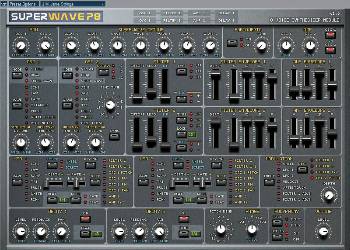
SuperWave P8 is a freeware Jupiter 8 clone originally developed for the KVR developer challenge, this picture displays the settings for the JM Jarre Strings patch.
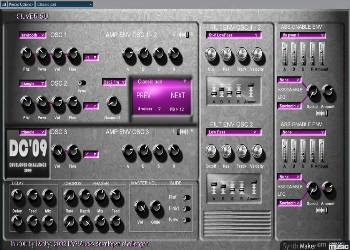
In-Kult is another example of shareware VST plug-ins also a feature of the KVR Developer Challenge from back in 2009, there are literally hundreds of different types available either for free or costing very little.
Formats for software synths include ASIO, DXi, Rewire, VST and VSTi. Most of the modern DAW's and music production geared softwares on the market are fully capable of running multiple instances of virtual synths, for example if you want 16 simultaneous tracks of a virtual Minimoog, then you can have precisely that, but do remember that your computer or device must have the capacity to run 16 instances of the plug-in, this is an extreme example, of course, in the real world you're far more likely to be running various different plug-ins simultaneously to create interest in your music and then overdub, bounce or convert groups of tracks into audio (which is much kinder on your computer's processor and active memory) and continue with additional tracks to compose your final piece of music.
Many mainstream manufacturers now recreate older physical hardware synthesizers in this software form, years ago computer processing power could not cope with running such complex software to produce the waveforms necessary to reproduce those classic instrument sounds with good accuracy, this is now no longer the case, so if you want the sound of a classic Korg M1 for instance, that is now possible to obtain as software.
Most of the leading manufacturers are now progressing rapidly toward a 'cloud' based model, where musicians can use software based classic instruments while online, a good example of the is the ' Roland Cloud™ ' which currently has significant numbers of old favourites available to be used without the requirement to download them at all, you can now produce your music from within the cloud and render final versions of your tracks.
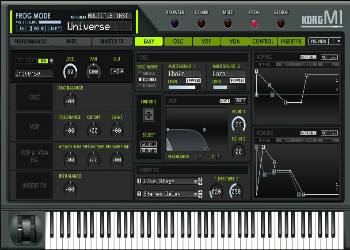
Typical screenshot of the Korg M1 soft-synth from the Legacy Collection, this picture shows the classic preset Prog Universe which is instantly recognizable to most music fans, having been used on hundreds of pop and dance music tracks of the 1990's. The M1 piano's are some of the most prolific in modern music history.
Many virtual synths are now available on the Apple iPad™ and iPhone™, with a number of other Apps now being produced by independent 3rd party developers for Google Android™ too. There is also the Korg DS-10 which is the recreation of the Korg MS20 synth in software form for the Nintendo DS, DS Lite and 3DS.
Newer soft-synths tend to be of a more hybrid type, amalgamating many different types of synthesis in each virtual instrument to create totally new instruments allowing users to come up with more interesting and unheard of sounds with superb clarity. Rob Papen's Blue™ (and now Blue 2) and 'Blade™' are both good examples of this type of hybrid software synthesizer.
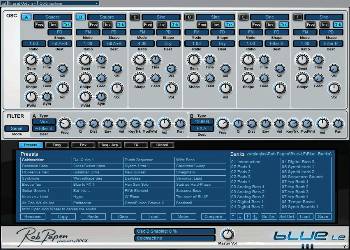
Rob Papen's Blue LeTM is a good example of a modern hybrid software VST synthesizer, with 6 different types of oscillator available for sound experimentation. This picture features the Coldmachine preset patch.
Other mainstream producers of VST Software Synthesizers include Arturia, Cakewalk, Korg, UVI, Native-Instruments, GForce, PropellorHeads and Waldorf, amongst many others. Other types of VST's include Virtual Drummer's such as Session Drummer™ (Cakewalk) and Toontrack's EZ Drummer™, and Sampler's such as IK Multimedia's SampleTank™ and Cakewalk's DropZone™.
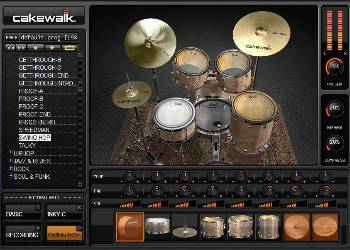
A typical preset drum pattern looping within Session DrummerTM.
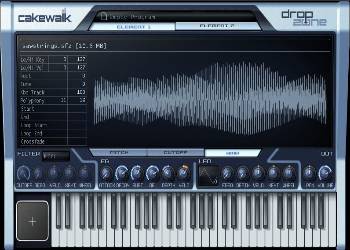
A typical waveform displayed in DropZone's editing window, this one is a Sawtooth Synth waveform.
This is an area of the industry which is continually evolving, developing and expanding, so there will be new products available in addition to those mentioned above and ever increasing numbers of them on the market.
